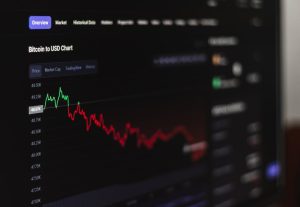MACD vs RSI: Which Indicator is Best for Forex Trading?
When it comes to forex trading, technical analysis plays a crucial role in making informed decisions and maximizing profits. Traders use various indicators to analyze price movements and identify potential entry and exit points. Two popular indicators that are widely used by forex traders are the Moving Average Convergence Divergence (MACD) and the Relative Strength Index (RSI). Both indicators have their own unique features and applications, but which one is the best for forex trading? Let’s dive deeper into each indicator to find out.
Moving Average Convergence Divergence (MACD):
The MACD is a trend-following momentum indicator that helps traders identify potential trend reversals, overbought or oversold conditions, and the strength of the current trend. It consists of two lines – the MACD line and the signal line – along with a histogram that represents the difference between these two lines.
The MACD line is calculated by subtracting the 26-day exponential moving average (EMA) from the 12-day EMA. The signal line is a 9-day EMA of the MACD line. When the MACD line crosses above the signal line, it generates a bullish signal, indicating a potential buying opportunity. Conversely, when the MACD line crosses below the signal line, it generates a bearish signal, indicating a potential selling opportunity.
The MACD histogram represents the difference between the MACD line and the signal line. When the histogram is above the zero line, it indicates bullish momentum, and when it is below the zero line, it indicates bearish momentum. Traders often look for divergences between the price and the MACD histogram to identify potential trend reversals.
Relative Strength Index (RSI):
The RSI is a momentum oscillator that measures the speed and change of price movements. It is plotted on a scale of 0 to 100, with levels above 70 considered overbought and levels below 30 considered oversold. The RSI is calculated based on the average gain and average loss over a specified period, typically 14 days.
When the RSI crosses above the 70 level, it indicates overbought conditions and a potential reversal in the price. Conversely, when the RSI crosses below the 30 level, it indicates oversold conditions and a potential reversal in the price. Traders often look for divergences between the price and the RSI to confirm potential trend reversals.
Which Indicator is Best for Forex Trading?
The answer to this question ultimately depends on the trading strategy and preferences of individual traders. Both the MACD and RSI have their own strengths and weaknesses, and traders need to consider these factors before deciding which indicator to use.
The MACD is particularly useful for identifying potential trend reversals and gauging the strength of the current trend. Its histogram provides a visual representation of the momentum, making it easier for traders to spot divergences. However, the MACD can sometimes generate false signals during ranging or choppy market conditions.
On the other hand, the RSI is effective in identifying overbought and oversold conditions, which can help traders anticipate potential price reversals. It is also useful for confirming divergences and providing additional confirmation for trade entries. However, the RSI can sometimes remain in overbought or oversold territory for an extended period, leading to false signals.
In conclusion, both the MACD and RSI are valuable tools in a forex trader’s arsenal. While the MACD is more suitable for identifying trend reversals and assessing trend strength, the RSI is useful for identifying overbought and oversold conditions. Traders can combine these indicators with other technical analysis tools and use them in conjunction to increase the accuracy of their trading decisions.
It is important for traders to understand that no indicator is perfect, and relying solely on one indicator may lead to suboptimal results. It is recommended to use a combination of indicators, along with price action analysis and fundamental analysis, to make well-informed trading decisions. Additionally, traders should always test their strategies on historical data and practice proper risk management to minimize potential losses.
In conclusion, the choice between the MACD and RSI ultimately depends on the trading style and preferences of individual traders. Both indicators have their own strengths and weaknesses, and traders should experiment with different combinations to find what works best for them. Remember, successful forex trading requires continuous learning, practice, and adaptation to changing market conditions.






